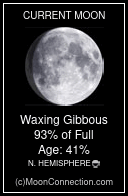The LeRoy Historical Society operates two separate museums within the same property in LeRoy. The Jell-O Gallery and the Historic LeRoy House are separated by the "Jell-O Brick Road," a small garden.
Learn the excellent story of America's Most Famous Desert, which was invented in LeRoy in 1897. The museum pays homage to the evolution of Jell-O as a brand and its place in everyday American life. There are numerous examples of how Jell-O promoted their product through clever marketing and merchandising tactics. The museum also has an excellent gift shop.
A little transportation museum, harkening to the times when people traveled by buggy or sled, is located in the basement of the Jell-O Gallery. It's a modest yet lovely collection that traces the growth of modern transportation.
The Historic Leroy House, erected in 1822 as a home for Jacob Leroy, a successful land agent, houses over a century of local history. The museum has three floors that are open to the public and are loaded with fascinating objects from the past. A highlight is an exhibit commemorating Leroy's Ingram University, which was established in 1837 and was the first institution to award women a four-year degree, as well as an exhibit honoring agricultural pioneer Calvin Keeney. The kitchen in the house recalls how meals were prepared and served a century ago.
The Holland Land Office Museum, housed in a stone building constructed in 1810, houses hundreds of objects from Western New York's history. Batavia is known as the "birthplace of Western New York" since the Holland Land Office was responsible for the sale and allocation of over 3.3 million acres of land. The Medal of Honor awarded to Batavian Charles F. Rand, the very first soldier in the country to volunteer for the Civil War, is on display inside the museum. The museum displays an authentic gibbet which was used to perform hangings, the last of which took place in 1881. Throughout the year, the Holland Land Office Museum hosts a variety of educational and social events. The museum is also located right next to the Batavia International Peace Garden.
The two-story house museum in Oakfield has several really interesting details. It provides an excellent job of informing tourists about the significance of gypsum mining in Oakfield. Numerous pictures and mining machinery reflect the history of significant gypsum mining in the town. Another representation at the museum is the Native American influence on the town and area which once stood a Seneca fort, village and mounds. A very impressive collection of arrowheads (gathered from the surrounding area) that alone is worth the trip. The Oakfield Historical Museum is unique in that they print their own publications about local history, that are available for purchase.
This small museum can be found on Route 5 within the Town of Pembroke Town Offices. Items from the town's past post offices are all on exhibit, reminding us of the way people used to deliver messages and other communications. One area is dedicated to the local fire department, where you'll discover how they used to fight fires with glass water grenades over a century earlier. Civil War enthusiasts will appreciate seeing a soldier's hat and ammunition. Pembroke's military history is also displayed prominently.
The Stafford Museum of History, which is connected to the Town of Stafford Town Hall, was constructed in 2004. The museum is one huge room with very well-presented artifacts in attractive display cases and information panels. This museum does not try to show you everything, but rather the excellent representations of early settlement life in Western New York. Visitors will also enjoy viewing the Morganville Pottery collection. A style of pottery with a characteristic reddish hue was produced in the nearby hamlet of Morganville (from the local excavated clay). Check out the museum's little gift shop on your way out.
The Tonawanda Band of Seneca Indians' heritage is celebrated throughout the Tonawanda Indian Community House's hallways. The historical artifacts are presented all throughout the
museum, therefore there is no particular museum room. The community house is open every day, so there are plenty of opportunities to visit and learn. Throughout the museum, large-scale photographs and illustrations showcase the Tonawanda Indian Reservation's history and heritage. Some of the lithographs tell the history of the tribe and the Seven Nations' history. On the second story, there is a piece of high reverence - a chief's headdress.
More Museums in Genesee County

